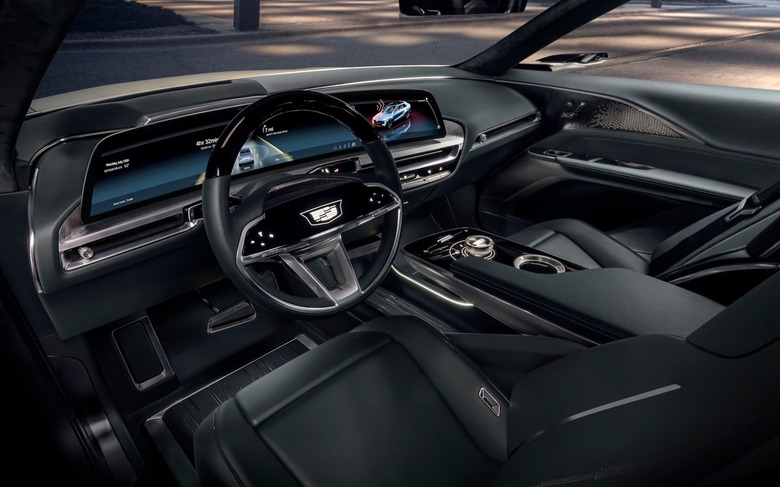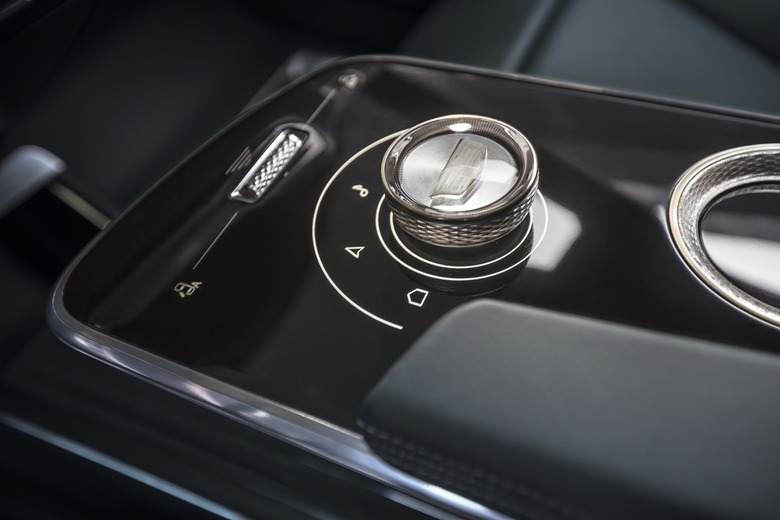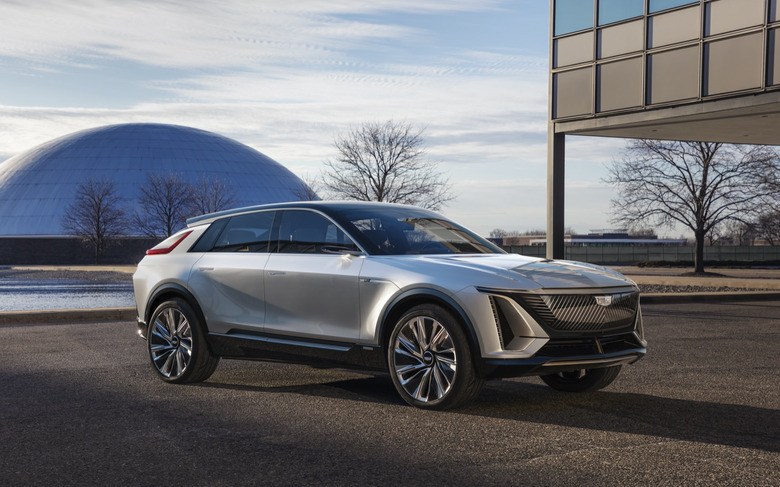Cadillac Got A Bad Reputation For Infotainment - Here's How Its Lyriq EV Will Change That
Cadillac's Lyriq all-electric luxury crossover isn't expected to hit dealerships until late 2022, but that hasn't stopped the automaker from previewing some of what should make the cabin of its new EV special. As you'd expect, there's no shortage of displays inside the Ultium-based SUV, but what may set the Lyriq apart is just what they're running.
Pride of the dashboard is a 33-inch LED display, which runs from the driver's left, encompasses their instrumentation, and flows seamlessly into the center stack infotainment. It's an evolution of the interface seen in the latest-generation Escalade, which has a similarly curved layout but uses separate screens.

Cadillac has fitted more displays in the rear, with the second row passengers getting their own, individual panels mounted in the back of the front seats. A further touchscreen sits in-between them, with access to HVAC and other controls. All in all, it's as futuristic as you'd expect from the brand's first step into full electrification.
All the same, as we saw with previous Cadillac infotainment offerings, there's more to it than just slick hardware. CUE, as the older version of the automaker's infotainment used to be known, gained a reputation for being visually intriguing but a pain to actually use in practice. Things improved over further iterations, and the system in the 2021 Escalade is a considerable step forward in usability, but for the Lyriq it seems Caddy wanted to go even further.
To do that the automaker looked to Territory Studio and Rightpoint, better known for their work on movies, games, and in creating 2D and 3D real-time graphics. Territory, for instance, worked on Cyberpunk 2077 and Forza Motorsport 6; Rightpoint counts the Six Flags mobile app among its clients. The result is something that looks familiar in terms of Cadillac's aesthetic, but promises to be more straightforward to use.
So far, Cadillac hasn't shown much of what the results of their handiwork will look like. What it looks like, though, is that there'll be more of a focus on interacting with virtual models of the car, similar to how you might outfit a character or vehicle in a video game. Instead of digging through menus to find information on tire pressure, for example, you'd be able to tap the wheels on an on-screen graphic to pull those details up.
It's not the first company under General Motors' umbrella to look outside for infotainment inspiration. GMC, for example, hooked up with Epic Games' Unreal Engine to power the interface in the new Hummer EV, the first time the platform had been turned to automotive purposes.
What it reflects is a growing appetite to do more with the hardware being fitted in cutting-edge – and typically expensive – vehicles. Displays and touchscreens have been getting larger and more numerous in modern cabins, but actually taking advantage of that is something automakers are still being relatively cautious with.
Part of that comes down to driver distraction, and the need to not only present information and media in a visually-pleasing way but one which doesn't take your eyes from the road. That's led to questions about whether the shift to digital interfaces and away from physical controls is actually helping or hindering overall safety.

In the case of the Lyriq, there'll be not only the touchscreen but a scroll wheel and shortcut buttons in the center console, plus buttons and scroll wheels on the steering wheel itself. There'll be voice interactions as well, of course, tapping the active noise cancellation system to help pick up commands while ignoring road noise. The EV will also have a dual-plane head-up display, which has twin panes to add depth to the information it overlays on top of the road ahead.

By the time the Lyriq arrives, of course, it won't be the only big screen offering on the market. Mercedes-Benz announced its MBUX Hyperscreen today, a sleek multi-pane dashboard with separate interfaces for the driver and front passenger. Byton is promising a dashboard-spanning screen for its upcoming M-Byte electric SUV, too. Each will nudge up against the various rules around the world for things like whether movies can be played while the vehicle is in motion, and how the interface responds to different people in the car.
